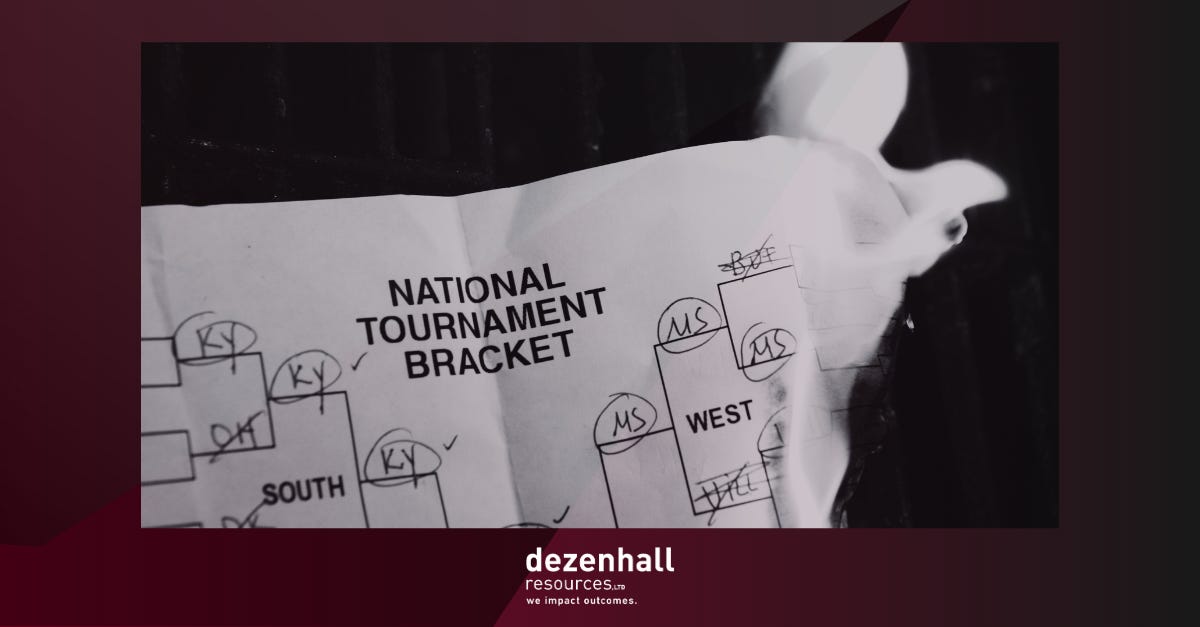Dez Reads. Foam Fingers, Disney’s Litigation Risk, Coca-Cola’s Mea Culpa, Scottish Stonehenge, and Chaotic Italian Horse Race.
The purpose of Dez Reads isn’t to show off our professional sides but to share our varied interests with our readers. That said, we struck a good balance this week between the two, with Anne Marie Malecha and Eric Dezenhall giving out some strategic comms advice amidst cultural intrigue from Jen Hirshon, Mike Bova, and myself.
If anyone is interested in a group trip to the Il Palio horse race in the coming years, I’m at jculling@dezenhall.com.
I hope you all enjoyed the Ides of August as we look toward finishing the year strong. And thanks, as always, for reading along with us.
Here we go.

Legal.
NPR. Disney wants a wrongful death lawsuit thrown out because the plaintiff had Disney+
Sadly, a woman recently died from a fatal allergic reaction at a Disney World restaurant, leading her family to sue Disney for wrongful death. Disney is attempting to get the case dismissed, or perhaps moved to arbitration, citing the language in Disney+ Terms and Conditions, as the family was a Disney+ subscriber. This is a unique legal maneuver, to say the least.
In most litigation today, there is a public relations – legal continuum that has to be considered at every step of the case. If we were working on this case, we’d have discussed with counsel:
- Are there potential reputational impacts with this course of legal action? Yes.
- Will this raise the profile of an otherwise seemingly uninteresting lawsuit? Yes.
- Are there other ways to make legal progress without giving NPR the opening to write the story that I’m now writing about? Yes.
But what we see reported is almost never the whole story. When it comes to crisis management, organizations are almost always picking the best of bad options. I wasn’t in the room, but I’d venture to say that’s what Disney did here. If I were working with Disney, I might have suggested finding a different type of case to try this curious tactic on. However, Disney’s ultimate objective is likely to limit its liability and public exposure as well as deter others from taking legal action against them. Should they win, this legal maneuver will help them do exactly that.
A special thanks to one of our loyal readers for flagging this article for us.
– Anne Marie Malecha
Business.
WaPo. How Coca-Cola tried and failed to suppress a boycott over Gaza
Coca-Cola sales have dropped in the Middle East and South Asia due to it being an American corporation and the United States’ association with Israel. To stanch the bleeding, Coke took out an ad in Bangladesh encouraging people to drink its product; after all, “Even Palestine has a Coke factory.” Nice try, Coke, because there is an inconvenient little fact the campaign didn’t mention: the bottling company in question is owned by Israelis. Oops. This unforced error has triggered a backlash, drawing more attention to the controversy than there would have been had they run no campaign at all. In fairness, Coke headquarters didn’t know about the campaign — until they did, and apologized, drawing the usual “too little, too late” blather from damage control pundits. What likely happened is that the Coke folks in Southeast Asia either didn’t know about Israeli ownership or knew and thought they could get away with the deception. After all, it’s safe to assume that Coke HQ has different standards of truth than some of its bottlers in far-flung corners of the earth. What jumps out at me here is less one’s position on the conflict in Gaza than it is the instinct of many companies under fire to offer reassurances before they know what the facts are and what the consequences of their deception might be.
– Eric Dezenhall
Science.
Phys. Stonehenge’s Altar Stone origins reveal advanced ancient Britain
I have spent the better part of my life traveling to and from Scotland. It’s where my family is from, where my relatives still live, and where my youngest son went to university. I have always been impressed by the ingenuity of the Scots. For such a small country, they have produced an impressive group of influential figures, from John Muir and Sir Alexander Fleming to John Knox, to name a few. Their inventions are equally remarkable: the telephone, penicillin, the pedal-driven bike, and the flushing toilet. So, I was both surprised and not surprised by the news of new research suggesting that the Altar Stone in the center of Stonehenge was somehow brought there from Scotland during the Neolithic Era (5,000-6,000 years ago). While this discovery has raised a lot of interesting questions about communities in this period, I think everyone should be asking why it wasn’t considered that it might have been the Scots who transported the stones there in the first place.
– Jen Hirshon
Culture.
The Economist. Making sense of the world’s most dangerous horse race.
I am a big fan of ancient, nonsensical European cultural traditions. A chaotic horse race in Siena, Italy, in Tuscany, has been running unchanged since at least 1633. Twice every summer, the city’s 17 contrades, or wards, select jockeys to represent their communities in a 1 km race around the city square, which The Economist notes is “entirely unsuitable for racing horses.”
This event is not only dangerous but intensely corrupt, with jockeys routinely receiving five-figure bribes to throw the race. There is violence in the lead-up to the event as individual contrades seek the pride that comes with victory and the joy of their rivals’ defeat.
The victors’ spoils? A painted banner declaring the victor. That’s it. As with most ancient competitions, there is something pleasing about competing for pride and glory instead of material wealth. I’m slotting Il Palio somewhere into the top 100 on my cultural bucket list.
– Josh Culling
Sports.
Mental Floss. How the Giant Foam Finger Became a Staple of Sports Events
If you have ever wondered about those $10 foam fingers at sporting events, I have a story for you.
The foam finger began with an Iowa high school student named Steve Chmelar. In 1971, he built a giant hand from paper mâché with an extended index finger to cheer on Ottumwa High’s basketball team in a state championship game. His team lost, but the new fad would live on.
Six years later, Geral Fauss, an industrial arts teacher just outside Houston, Texas, made 400 oversized pointing hands out of masonite (engineered wood) and sold all of them to raise money for the industrial arts club. After seeing so much success he sold them at the 1978 Cotton Bowl Classic, they all sold out in 20 minutes. After toying with different materials, he settled on an artificial sponge, and by peak times in 1982, his company was making up to 5000 hands a day.
When asked about the popularity of the product, Fauss told Sports Illustrated, “Fans like to wave things during games. It’s just another thing to wave.”
– Mike Bova


